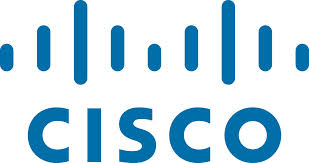Yesterday, I attended an interesting session hosted by Microsoft Canada at their headquarters just outside Toronto. It was a joint presentation done in partnership with Accenture and Avanade about how they view the �Next Generation Workplace�. Together, these three companies can provide a very comprehensive team to design and implement a Microsoft-friendly workplace solution for pretty much any IT environment. You can imagine the price tag that must go with all this high-powered expertise, but I�m sure it�s worth it for enterprises with complex IT needs and who aspire to the latest that Unified Communications has to offer.
The presentation and discussion wasn�t focused on Unified Communications per se, but it�s pretty central. With Microsoft at the heart of things, they talked about the nextgen �workplace framework� around this. Thankfully � at least for me � the discussion was more about the workplace environment than the network infrastructure issues. They addressed issues and pain points that I�ve seen in other UC-oriented presentations � such as decreasing productivity, the limitations of existing infrastructures to support today�s communications needs, the challenges brought on by the globalization of business, and the increasing speed of communications.
On a more basic and personal level, they covered familiar ground such as the challenges of managing multiple inboxes, multiple contact profiles, multiple silos of information across the organization, and the trend towards working with/across multiple as well as virtual teams.
All of these are giving rise to solutions that speak to Unified Communications, not just for personal productivity, but for organizational productivity too. Given the partners in the room, a lot of attention was paid to the latter, and in essence, this was their version of CEBP � Communications Enabled Business Processes. This term was never mentioned, as it�s closely associated with Avaya, and perhaps as a proxy, they often talked about these processes as �digital collaboration�. I like that term better actually. I�m oversimplifying things here, but in a nutshell, that�s how it came across to me.
While the basic story lines were familiar, I found this triumvirate partnership approach interesting. As mentioned, having all this high-end expertise may not be for everyone, but it�s a clear message that Microsoft is willing and able to go to market with the best and the brightest to remain central from the network out to the desktop and beyond. I think we�re going to see more partnerships like this as go-to-market strategies since so much is at stake now that UC is coming into its own.
I�ve written about this several times, and all the major vendors are touting their total solution approach, but none of them truly have all the pieces. Microsoft in particular needs this type of companionship, as they have the core building blocks in place with their installed base of software and operating systems. By partnering with the likes of Accenture and Avanade, they can now leverage this out into the workplace with end to end applications that strike a balance in empowering both the IT departments and the end users across the enterprise.
As an aside, I just have to mention how little reference there was to Web 2.0 style applications. Not surprisingly, the focus was on software-based platforms, and not much talk about cloud-based computing, or the dreaded G-word. That�s ok, and it�s to be expected. However, I must say that for me, the most animated and engaged dialog was around social networking, and issues that generally are not the core domain of Microsoft. There was a lot of concern that the use of social networking and Web-based applications was out of control � namely Facebook, IM and wikis. These applications � and the associated behaviors among end users � are really beyond the everyday control of IT managers � short of blocking their usage altogether.
Pretty interesting hearing the concerns this raises for IT and the lack of their ability to monitor and control these modes of communications. Unified Communications may have wonderful intended benefits, but by nature, there will be unintended consequences. The very tools that make workplace productivity increase are the same tools that enable the blurring between business and personal communications. What�s an IT manager to do when an employee ends up sending a work-related file over a public IM platform like MSN because it was too big to be sent over the corporate network? Or when a sales trainee starts producing great leads that came from his Facebook network?
It�s Wild West territory for sure, and it was clear to me that nobody really has an answer for this yet. I have no doubt they�ll be addressed in time, but from what I�ve seen so far, the problem will only get worse before it gets better. Short term, I�d say there�s opportunity here for creative developers to bring targeted solutions to the likes of Microsoft, as I think it�s fair to say that these concerns are on the minds of virtually all IT managers today.
Technorati tags:
Microsoft, Jon Arnold, Avanade, Accenture











No comments:
Post a Comment